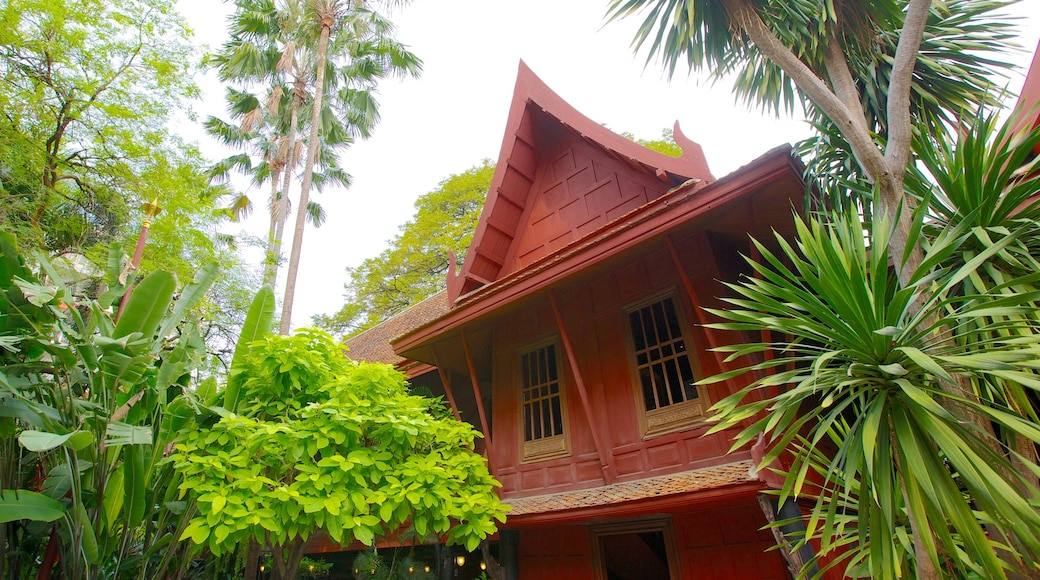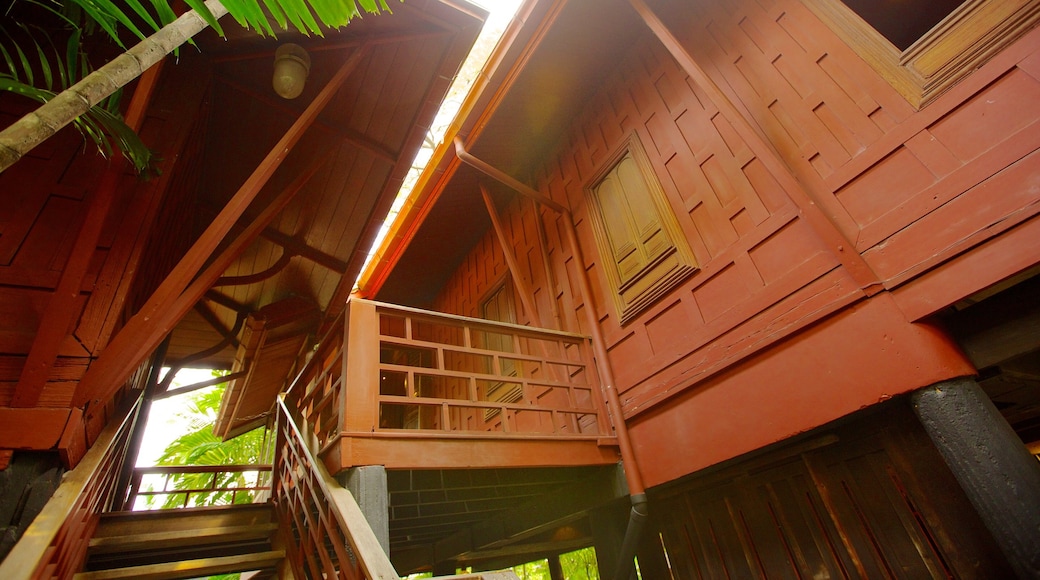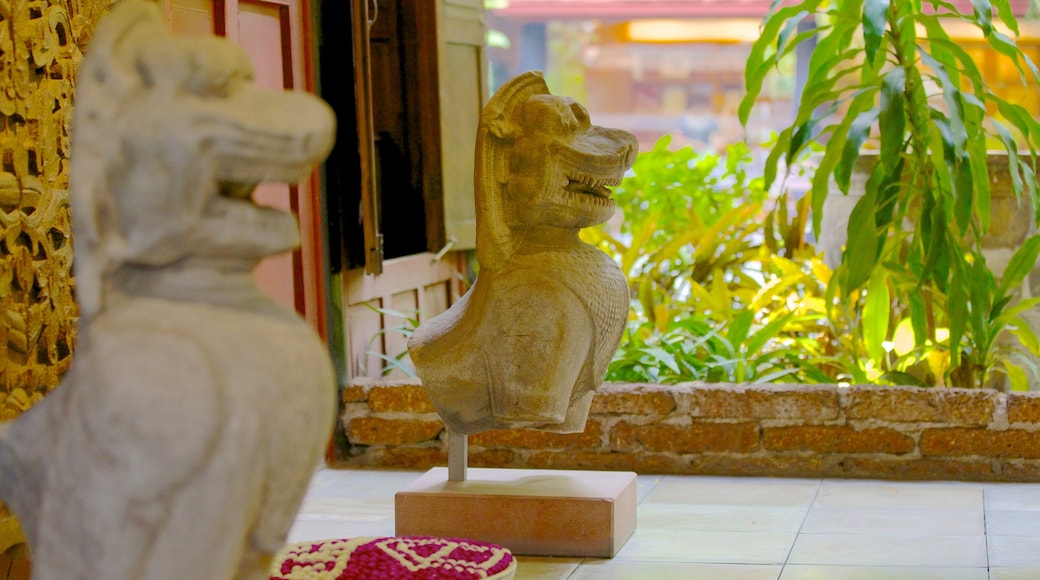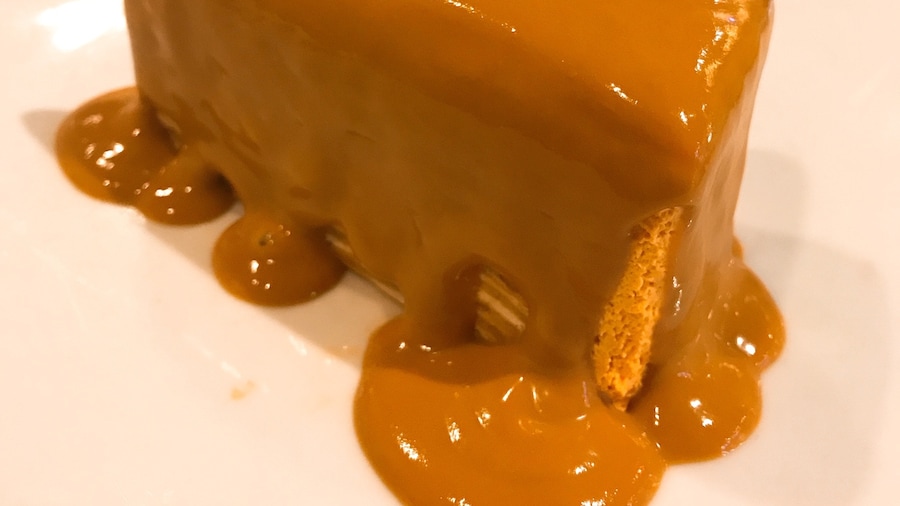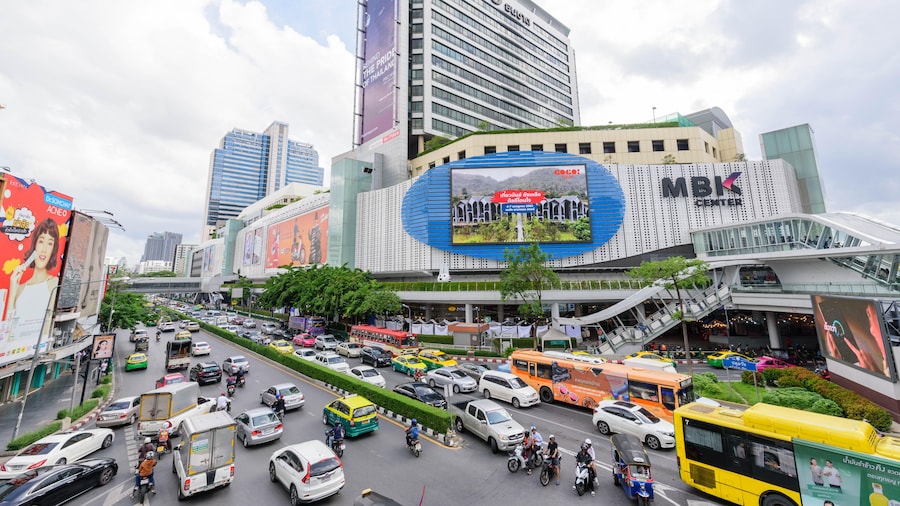Jim Thompson was a qualified architect and the house that he built in 1958 on the banks of Klong – or canal – has now been turned into a museum. It is a peaceful place, demonstrating some of the best of Thai architecture and construction techniques. The complex also houses the Jim Thompson Arts Centre, which displays temporary exhibits of contemporary and traditional arts.
James H.W. Thompson was an American expatriate who holds a singular place in Thai history. Having served in Thailand during the Second World War, he moved back to Bangkok in the 1950s. Credited with saving the crumbling industry of hand-woven Thai silk and making it a profitable international export, he was awarded the Order of the White Elephant for service to his adopted country. He disappeared while on holiday in Malaysia in 1967 and was never heard from again. The mystery of the vanishing ‘farang’ (westerner) has never been resolved.
The house was built by dismantling old teak buildings bought from around the country and reassembling on the piece of land he had purchased on the canal. The complex is made up of six properties, each built according to traditional building techniques which don’t require nails. The houses are kept cool by the positioning of windows to encourage a constant flow of air, as well as a distinctive elevated roof design which draws the hot air upwards.
Thompson was a prolific collector and items as varied as Benjarong porcelain, antique maps and Buddha images from throughout South-East Asia are displayed around the house. A 35-minute guided tour is included in the entry fee, and your knowledgeable guide will introduce you to some of the more interesting pieces in his collection.
The in-house restaurant stays open late, so treat yourself to lunch or dinner overlooking the landscaped gardens. You can also buy silk scarves and other items made by the Jim Thompson silk company at the shop. Located opposite the National Stadium, the house is easy to reach by taxi, bus or tuk-tuk.
